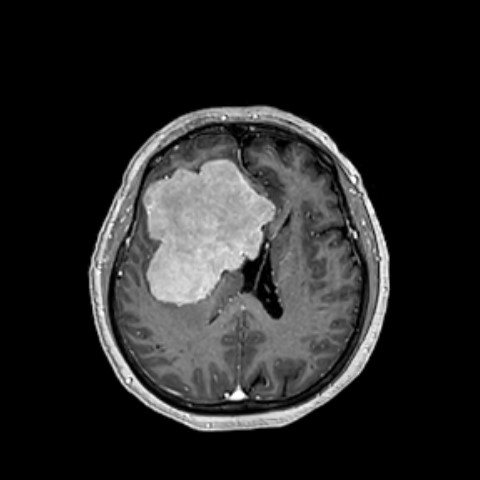Meningiomas
A meningioma is a generally benign tumor that arises from the meninges. Meninges are the membranes that surround the brain and spinal cord. The main problem of meningiomas is the compression or squeezing of the adjacent brain, nerves and vessels. These are the most common type of tumor that forms in the head.
Most meningiomas grow very slowly, often over many months or years without causing any symptoms. When they reached a significant volume, their effects on nearby brain tissue, nerves or vessels may cause serious disability.
Meningiomas occur more commonly in women and are often discovered at older ages, but they may occur at any age and in both sexes. The most common known risk factor is female hormones, notably the progesterone. Many researches suggest that the use of oral birth control or hormone replacement therapy could raise the risk of meningioma growth. For this reason, every women on hormone replacement therapy should have a continuous screening with brain MRI every 5 years, with IV contrast.
Because most meningiomas grow slowly, often without any significant signs and symptoms, they do not always require immediate treatment and may be observed over time. When they reached a certain volume threatening the adjacent brain, they should be removed surgically. Below you can find an example of how big meningiomas can be, with the result of surgical treatment. This surgery was done by Dr David. The left image is the preoperative MRI and the right image is the postoperative MRI.


